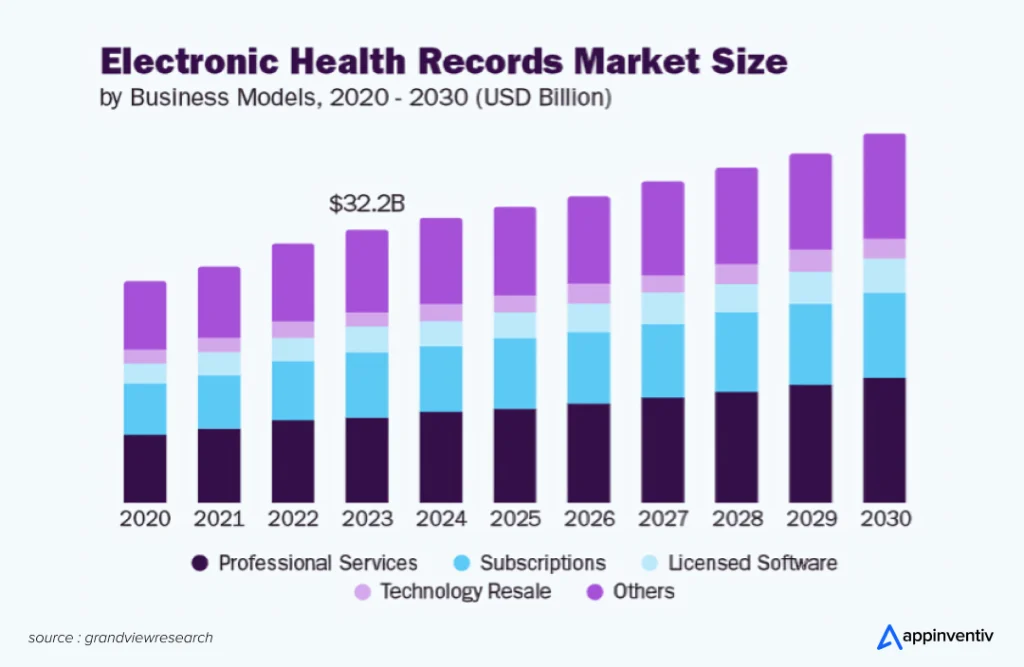As the healthcare provider moves rapidly from paper-based systems to digital solutions, electronic health records (EHR) have become an important part of modern healthcare infrastructure. While many healthcare organizations opt for the off-the-shelf EHR solutions, others choose custom EHR development for analogous functionality, scalability and better integration with their workflows. However, the biggest question is: What is the custom EHR development cost in 2025?
Understanding the cost factors associated with the construction of a Custom EHR is important for any healthcare practice, hospital or health-technical entrepreneur. This article suggests what happens in custom EHR development, major cost factors, and how you can make informed decisions when investing in a tilated EHR system.
What is a custom EHR?
A custom electronic health record (EHR) is a software solution designed to meet the unique needs of a healthcare provider or network. Unlike the solutions prepared, the custom EHR is developed from the ground to align with specific clinical workflows, user roles, compliance requirements and integration preferences.
Custom EHRS enhanced flexibility, better data control and personal features such as:
- Silated patient record management
- Integration with clinical equipment
- Unique reporting and analytics dashboard
- Custom Billing Module
- Telemedicine capabilities
However, these advantages come at a price – both in the time of development and in terms of financial investment.
Custom EHR Development Cost: Major affected factors
The cost of custom EHR development varies significantly depending on several variables. Here are the main elements that affect the overall cost:
1. Scope of facilities
The number and complexity of the features you want to include will directly affect the total growth cost. Basic EHR functionalities such as patient records, appointment scheduling, and e-commercials will cost lower than advanced features such as AI-based diagnostics or real-time health monitoring integration.
Some commonly requested features include:
- Patient and provider dashboard
- Medical History Tracking
- Clinical decision support
- Safe message
- Lab result integration
- Custom Reporting
- Third-party app integration
2. Design and user experience (UX)
A simple yet effective user interface (UI) takes time and expertise to manufacture with a simple user experience (UX).
Custom design function – especially a prototype, user testing and access compliance – can be an important part of the budget.
3. Compliance and security
Completion of regulatory standards such as Hipaa (in U.S.) or GDPR (in the European Union) is non-oblique to healthcare applications. Developing safe systems that follow these framework require special knowledge and additional development hours.
Such as safety measures:
- End-to-end encryption
- Multi-Faculty certification
- Roll-based access control
- Audit trails
Are necessary and add to the overall cost of development.
4. Team creation
The structure and location of your development team play a major role in determining your custom EHR development cost. Usually, a development team can join:
- Project Manager
- UI/UX Designer
- front end Developer
- Backend developer
- QA Engineer
If you choose the option of the in-house team, your expenses are likely to be more due to salary, profit and overhead. A dedicated team from the Healthtech-centered development agency can reduce the cost by maintaining the quality outsourcing or renting.
5. Development timeline
The Custom EHR system is not built overnight. Depending on complexity, development can be carried anywhere for 6 to 18 months or more. Extended timelines can lead to increased costs in terms of labor, infrastructure and project management.
- The timeline is often broken in stages such as:
- Requirement gathering
- Wireframaing and design
- Frontend and Backend Development
- Integration and Testing
- Compliance and Safety Verification
- Deployment and Training
The more rigid and extended the process, the higher the cost.
6. Technology piles
Selection of technologies- Programming language, framework and third-party services- performance, scalability and protection may require experts who command high rates.Custom also affects EHR Development Cost. Modern tech stacks that provide high
Popular options include:
- Backend: Node.JS, Python, .NET
- Frontend: React, Angular
- Database: Postgresql, MongodB
- Cloud Services: AWS, Azure, Google Cloud
Licensing fee for third-party APIs or services can also be added to the budget.
7. Maintenance and support
The cost does not end with development. Regular maintenance, security updates and technical assistance are necessary to ensure smooth operation post-launch. You should budget at least 15-20% of the annual early development cost for maintenance.
It also includes:
- Bug fixes
- Server Monitoring
- Feature update
- Performance adaptation
- Compliance update
How to Optimize Custom EHR Development Cost
The construction of a custom EHR is an important investment, but you can control the cost without renouncing quality.
1. Start with a minimum viable product (MVP)
Depending on the user response, you can gradually add more functionality.
2. Choose the right development partner
Partner with a team that has experience in healthcare software. They will already understand the standards of the industry, which saves time and avoid expensive mistakes.
3. Give priority to facilities
There is no need to manufacture all facilities at once. Focus on functionality should be focused and postponed non-mutable features in later development stages.
4. Use open-source components
Where possible, integrate safe open-source solutions to reduce licensing costs and development time.
Conclusion
Although the custom EHR development cost is significantly higher than the cost of-the-chest solutions, if you are aiming for long-term scalability, better compliance and tailor functionality, return to investment may be sufficient. With proper plan and correct development partner, a custom EHR can be a strategic property rather than an expensive burden.

